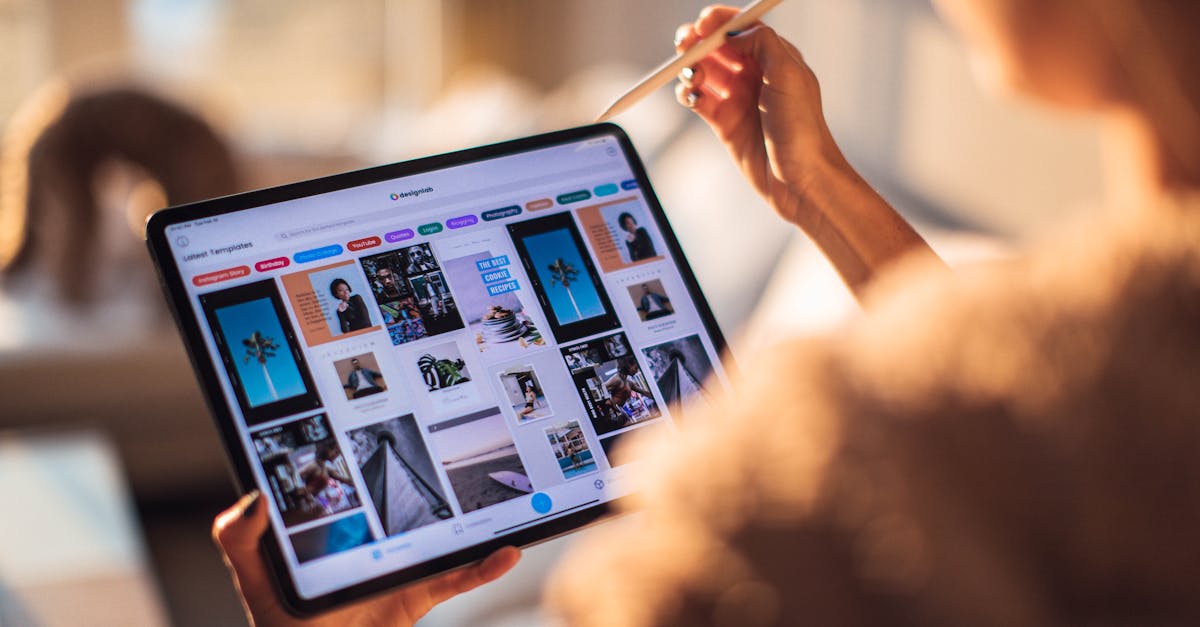Generated by Contentify AI
- Introduction:
- Overview of Mi Phone Operating Systems:
- Pros and Cons of Different Mi Phone Operating Systems:
- Evaluation Process for Different Mi Phone Operating Systems:
- Conclusion:

Introduction:
Welcome to the blog section on evaluating different Mi phone operating systems! As the world of smartphone technology continues to evolve at a rapid rate, it is more important than ever to understand the advantages and limitations of each operating system. With the abundance of choices, it can be difficult to determine which is the best fit for your own specific needs.
This blog post aims to provide an in-depth evaluation of the three major Mi phone operating systems: Android, iOS, and MIUI. Each system has its own unique features and benefits, so we will examine each one in detail to help you make the most informed decision.
Android is the most popular mobile operating system on the market. It features a comprehensive suite of applications, including the Google Play Store, which provides access to millions of apps and games. Android is versatile and customizable, allowing users to personalize their device to suit their individual needs. Additionally, Android users have access to the Google Assistant, a voice-activated artificial intelligence service.
iOS is Apple’s proprietary operating system. It is designed to provide a secure and intuitive experience for users of iPhones and iPads. iOS features a number of features, such as the App Store, which offers access to a wide variety of apps and games. Additionally, Apple’s iCloud service allows users to store and sync their data across their devices.
MIUI is an Android-based operating system created by Xiaomi. It has a number of unique features that set it apart from other systems, such as a built-in voice assistant, a powerful security suite, and deep customization options. MIUI has a clean and streamlined design, allowing users to get more work done faster.
Each operating system has its own benefits and limitations, and there is no one-size-fits-all solution. We hope this blog post has helped you gain a better understanding of the three major Mi phone operating systems.
Overview of Mi Phone Operating Systems:
The Mi Phone Operating System (OS) ecosystem has experienced rapid growth in recent years. With more and more Mi phone models being launched every year, it’s becoming increasingly difficult to evaluate which OS is the best fit for your specific needs.
In order to make the decision making process easier, we’ve compiled an overview of the different Mi Phone Operating Systems and their respective features.
The most popular and widely used Mi Phone Operating System is MIUI. It’s a powerful and flexible system that’s designed to help consumers with their everyday tasks. It offers a wide range of features, from intuitive user interfaces to robust customization options. MIUI is also regularly updated to ensure that it remains up-to-date and secure.
Another popular Mi Phone OS is ColorOS. It’s an OS that’s tailored to provide a smooth and efficient user experience. It’s optimized for gaming, and also provides an array of advanced features such as face recognition and gesture recognition. ColorOS also includes an array of themes and wallpapers to help users customize their phone’s look and feel.
The third main Mi Phone OS is Flyme OS. It’s an OS that focuses on simplicity and usability. It provides a clean interface and a variety of gesture-based shortcuts that make performing tasks fast and easy. Flyme OS also offers a number of customization options, allowing users to customize their phones to their own preferences.
The last major Mi Phone OS is EMUI. This OS is designed for business users, providing enterprise-level security and the ability to access various enterprise systems. EMUI also offers a wide range of features such as dual app support, facial recognition and more.
In conclusion, there are a variety of Mi Phone Operating Systems available. Each has its own advantages and disadvantages, so it’s important to evaluate which OS is the best fit for your specific needs. With the right OS, you can ensure that you enjoy a smooth and efficient user experience on your Mi Phone.
Pros and Cons of Different Mi Phone Operating Systems:
If you’re shopping for a new Mi phone, you may be overwhelmed by the number of operating system options available. Each of these operating systems has its own pros and cons, so it’s important to do your research to determine which one is best for you. In this blog, we’ll discuss the different operating systems available for Mi phones, outline their pros and cons, and help you make an informed decision about which one is right for you.
MIUI
The MIUI operating system is developed by Xiaomi, the company that manufactures Mi phones. It’s a powerful operating system that is optimized for Mi phones, meaning they tend to run smoother and faster than phones with other operating systems. It also comes with a variety of pre-installed apps and services, such as Mi Music and Mi Cloud, as well as Mi App Store.
Pros:
– Optimized for Mi phones, so they run smoother and faster
– Pre-installed apps and services, such as Mi Music and Mi Cloud
– Mi App Store for easy downloading of apps
Cons:
– Not as many customization options as other operating systems, such as Android
– Fewer app options than other operating systems
– Lacks support for certain features, such as Google Play Services
Android
Android is the most popular operating system, developed by Google. It is open source and highly customisable. It also comes with a variety of pre-installed Google apps, such as the Play Store, Google Maps and Gmail.
Pros:
– Highly customizable
– Variety of Google apps pre-installed
– Open source, so users can download and install apps from other sources as well
Cons:
– May not be as optimized for Mi phones as MIUI
– May have security issues if users download and install apps from untrusted sources
– May have compatibility issues with certain features, such as Google Play Services
Windows Phone
Windows Phone is Microsoft’s mobile operating system. It is designed to be easy to use with a modern, intuitive user interface. It also has a variety of Microsoft apps, such as Office and Skype, pre-installed.
Pros:
– Easy to use and intuitive user interface
– Variety of Microsoft apps pre-installed
– Compatible with Windows PCs and laptops
Evaluation Process for Different Mi Phone Operating Systems:
When it comes to choosing the right mobile operating system for a Mi Phone, there are many factors to consider. Here, we will look at the process of evaluating different Mi Phone operating systems and what you should be looking for.
Firstly, it’s important to understand the different types of operating systems available for Mi Phone. There are two main types: Android and MIUI, both of which come from Xiaomi. Android is the original mobile operating system created by Google, while MIUI is a custom version of Android designed to deliver a more seamless user experience. Both operating systems have their own strengths and weaknesses, so assessing which one is best for your needs can be a difficult task.
The first step in evaluating different Mi Phone operating systems is to consider their features. Android offers a variety of features, such as the Google Play Store, the Google Now voice assistant, and the ability to customize your device with third-party apps. MIUI also offers several features, such as a built-in virus scanner, an advanced power management system, and a more intuitive interface. It is important to note that while both operating systems offer a wide range of features, they may not all be available on certain Mi Phones.
The second step is to assess the performance of the operating system. Both Android and MIUI are designed to run efficiently, but there can be differences in performance based on the hardware used in a particular Mi Phone. You should compare the specifications of the various models to get an idea of which one is better for your needs.
Finally, you should evaluate the user experience. Android and MIUI have different user interfaces, so it is important to consider how you plan to use your Mi Phone when making your decision. If you prefer an interface that is easy to navigate, MIUI may be the best choice. If you prefer an interface that allows for more customization, Android may be your best bet.
By taking the time to evaluate different Mi Phone operating systems, you can make sure that you choose the one that is best suited to your needs.
Conclusion:
The Mi Phone Operating System is a powerful and versatile tool that can be used in a variety of situations. It offers a range of features and functions that will benefit a wide range of users. The ease of use, compatibility with existing data and services, and the ability to customize the user experience make it a great choice for those looking for a comprehensive mobile platform.
When considering which Mi Phone Operating System to use, it is important to evaluate the strengths and weaknesses of each option. The most popular choices in the market – iOS, Android, and Windows – all have their own advantages and disadvantages. Cost, support, and compatibility can be key factors when making a decision.
iOS is the most popular choice for Mi Phone users, and its advantages make it a strong contender. It is a closed system that offers stability and reliability, and it is well-suited for users who prefer a more straightforward user experience. However, this stability comes at the cost of customization, and the closed nature of the system can be limiting.
Android is a popular choice for those looking for more control over their experience. It is an open-source platform, allowing for customizations and a great deal of flexibility for users. However, this flexibility comes at the cost of stability and reliability, and there is a greater risk of malware and viruses infiltrating their devices.
Windows is the least popular of the three options, though it has its advantages. It is a closed system that is well-suited for business users, offering the same stability and reliability of iOS but with more control and customization options. The downside is that Windows phones often lack the latest apps and features.
Overall, the choice of Mi Phone Operating System will depend on the user’s individual needs and preferences. If a business user is looking for a reliable and stable platform, then iOS or Windows may be the best option. If a user is looking for more control and customization, then Android may be the better choice. Ultimately, the best decision is the one that best meets the needs of the user.


